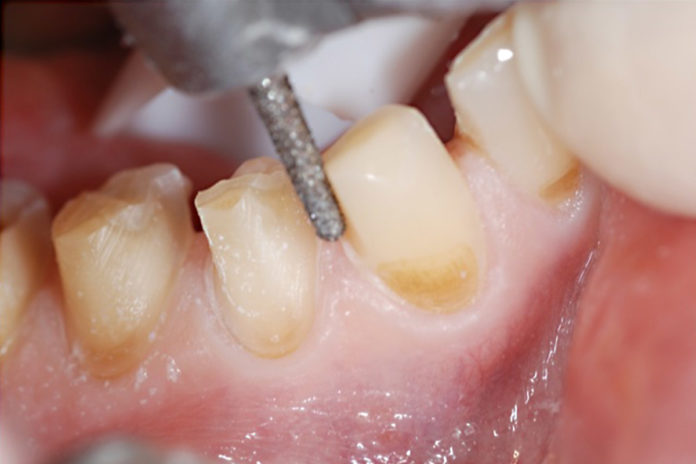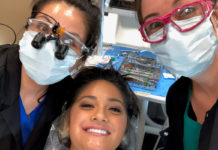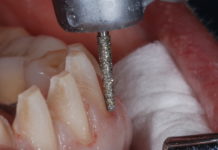
A couple of times each year, I teach a course called “Beyond the Basics” with the Dr. Dick Barnes Group seminars. During the class, we have a section that I call “Prep for Success.” Most dentists come to continuing education (CE) with the assumption that they know how to prep a tooth. And of course, they do. But what they don’t always understand until they’ve experienced it, is how there might be different and better ways to prep a tooth beyond the way they’ve always done it. “Prep for Success” is teaching dentists just that—a different and better way to prep—faster and with more accuracy.
“Prep for Success” is teaching dentists just that—a different and better way to prep—faster and with more accuracy.
Slow Down to Speed Up
As new dentists, we know that going into practice on your own can be incredibly difficult. New doctors typically start out with crushing school debt and then face the high costs of establishing a business. Dentists can easily develop a scarcity mentality and feel that they have to get patients in and out as quickly as possible because more patients and more procedures means more revenue.
But a scarcity mentality is a paradox because it can actually lead to burnout. Being busy does not necessarily equate with being profitable. If a dentist’s approach to key skills is not dialed in to maximize speed and effectiveness, he or she could be in for grueling days without the benefit of great production.
If a dentist’s approach to key skills is not dialed in to maximize speed and effectiveness, he or she could be in for grueling days without the benefit of great production.
The groundwork for good and efficient production starts with good skills—specifically good prepping skills. The lack of a good tooth prep on dental procedures almost always leads to more follow-up care: a crown will pop off or it might shear, the patient might need more fittings, or you might need to do a root canal in the future. In the long run, a quick but ineffective prep costs a dentist time, money, possibly their reputation, and sometimes the loyalty of the patient.
There’s a big difference between being fast and being efficient. Being efficient is like being fast, but doing it in the right way. The first thing I tell doctors who take my course is, ‘I am giving you permission to slow down to speed up. Do it properly.’
Many new doctors are nervous about prepping and it’s justifiable. New dentists are trained on mannequins, which means they haven’t dealt with real-world problems: some patients can’t open their mouths wide enough, some patients are anxious, and some patients are well, impatient! A strategy for prepping and improving your technique goes a long way in providing a consistent level of quality care.
Effective Technique
Of course, there’s no single prep technique that will work in every situation. But every good prep exhibits certain general characteristics that result from a disciplined approach that combines design, execution, and consistency.
Design. This is critical because it determines the fit and longevity that a dental restoration is likely to have. If a crown is designed to fit, it won’t pop off easily. No patient wants to go to the dentist multiple times because a temp or crown keeps popping off.
To have a good retentive prep, dentists should have a smooth, contoured surface—not “washboard” ripples on the axial walls. Washboards cause problems for lab technicians; a tech has to block out the ripples and the undercuts that impede the restoration from seating on the prep without rotations or rocking. This necessitates increased cement thickness to make it fit rather than having the crown fit precisely on the tooth itself.

Efficiency. This is important because it cuts down on the amount of time dentists have to spend on each task without sacrificing great long-term results. Any patient is going to consider these things a win, but they’re a win for the doctor as well: less time spent with a patient equals more patients in chairs and less follow-up work. Merely being fast doesn’t guarantee any of these things. Execution. This is critical because if dentists don’t have consistent execution in their prep technique, they will get into situations where some restorations look and fit well while others don’t. This is especially true with multi-unit cases, or full arch and full mouth cases. Dentists should practice executing preps well in order to achieve consistency.
If dentists don’t have consistent execution in their prep technique, they will get into situations where some restorations look and fit well while others don’t.
Time and time again, I have watched a dentist start work on a large case only to have an inconsistent experience where some of the crowns seat great and others have problems, resulting in return visits to the office. Almost without exception, this inconsistency can be traced to the execution of the prep. In large cases, a lack of a systematic approach to prepping can also lead to hand fatigue and a worsening prep design.
A Kinesthetic Approach
Learning how to execute a new and different way of prepping requires a kinesthetic type of learning—doctors have to learn new muscle memory to override what was previously learned. I call it “scratching the record”— in other words, breaking with tradition. The dentist may have to change the way he or she holds the handpiece—to the contour position of the axial walls.

Kinesthetic learning is much more powerful than auditory learning. To execute a new prepping style efficiently, dentists should start by practicing on a posterior tooth and then when the new style becomes familiar, work on an anterior tooth. During the practice session in the class I teach, after one or two preps, the dentists want to keep practicing.
At the “Beyond the Basics” course, we spend one day on stone model prepping for various situations. Crowded cosmetic scenarios to full arch sequence prepping with bite registration control. This gives the practitioner new skill sets on prepping teeth to create the outcome needed for optimum results. In part II of this story, I’ll go over the key factors for prep design. In the meantime, keep the diamond bur on the tooth for 10 seconds. DO NOT LIFT off the tooth during prepping—keep the bur on for and match a long stroke.
For more tips on how to prep for success, see part 2 of my story—coming soon!









